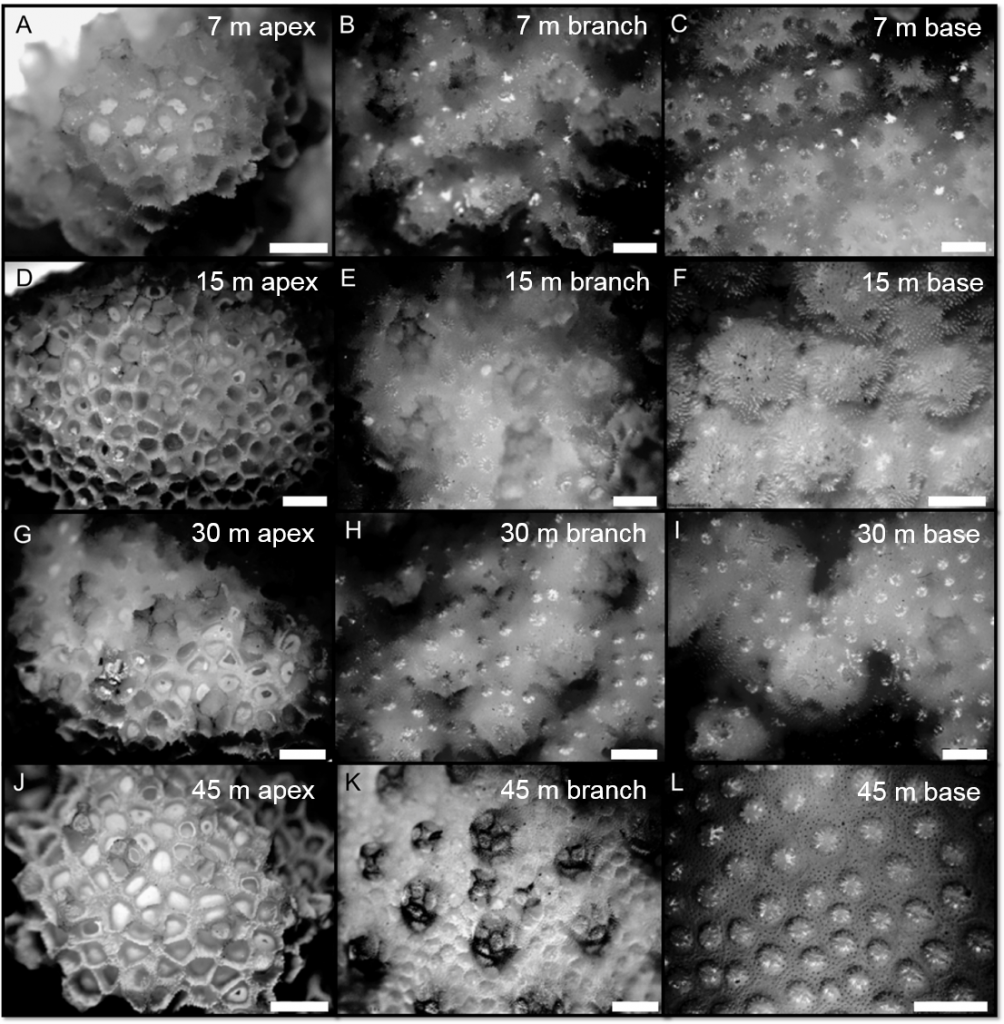Spatial variation in the morphological traits of Pocillopora verrucosa along a depth gradient in Taiwan
Coral taxonomy typically derives from descriptions of skeletal micro- and macrostructures, however, these characteristics may be altered in a phenomenon known as morphological plasticity. In Taiwan, Pocillopora verrucosa exhibits a broad distribution, leading to exposure to gradients of light and water movement, however, thus far, the effects of spatial gradients on the morphology of this coral have not been described. As part of a collaboration between Prof. Denis and researchers of Academia Sinica, the authors applied a quantitative approach to examine the morphology of 85 typed P. verrucosa specimens collected along a depth gradient ranging from 7 to 45 meters and comprising 3 sites throughout Ludao, Taiwan. Using this approach, distinctive patterns of morphological variation along vertical and horizontal gradients are demonstrated, suggesting that abiotic parameters such as light and water flow exert significant influence on coral skeletal structures. This research constitutes an important contribution to understanding how corals can acclimatize to the unique environmental of mesophotic reefs and contributes significantly to our knowledge base of mesophotic coral ecosystems in Taiwan. Prof. Denis’ paper, titled “Spatial variation in the morphological traits of Pocillopora verrucosa along a depth gradient in Taiwan” was published in the journal PLoS ONE in August 2018 and constitutes part of a broader effort which aims to scrutinize mesophotic coral reefs in Taiwan under the contemporary framework of climate change and the deep reef refugia hypothesis.
(Vianney Denis)
Reference: Soto D, De Palmas S, Ho MJ, Denis V, Chen CA* (2018) Spatial variation in the morphological traits of Pocillopora verrucosa along a depth gradient in Taiwan. PLoS ONE 13(8):e0202586. doi:10.1371/journal.pone.0202586
Figure legend: Skeletal structure of 3 distinct morphological regions (apex, branch, base) of Pocillopora verrucosa collected from 4 depth ranges (7m, 15m, 23-30m, 38-45m).











